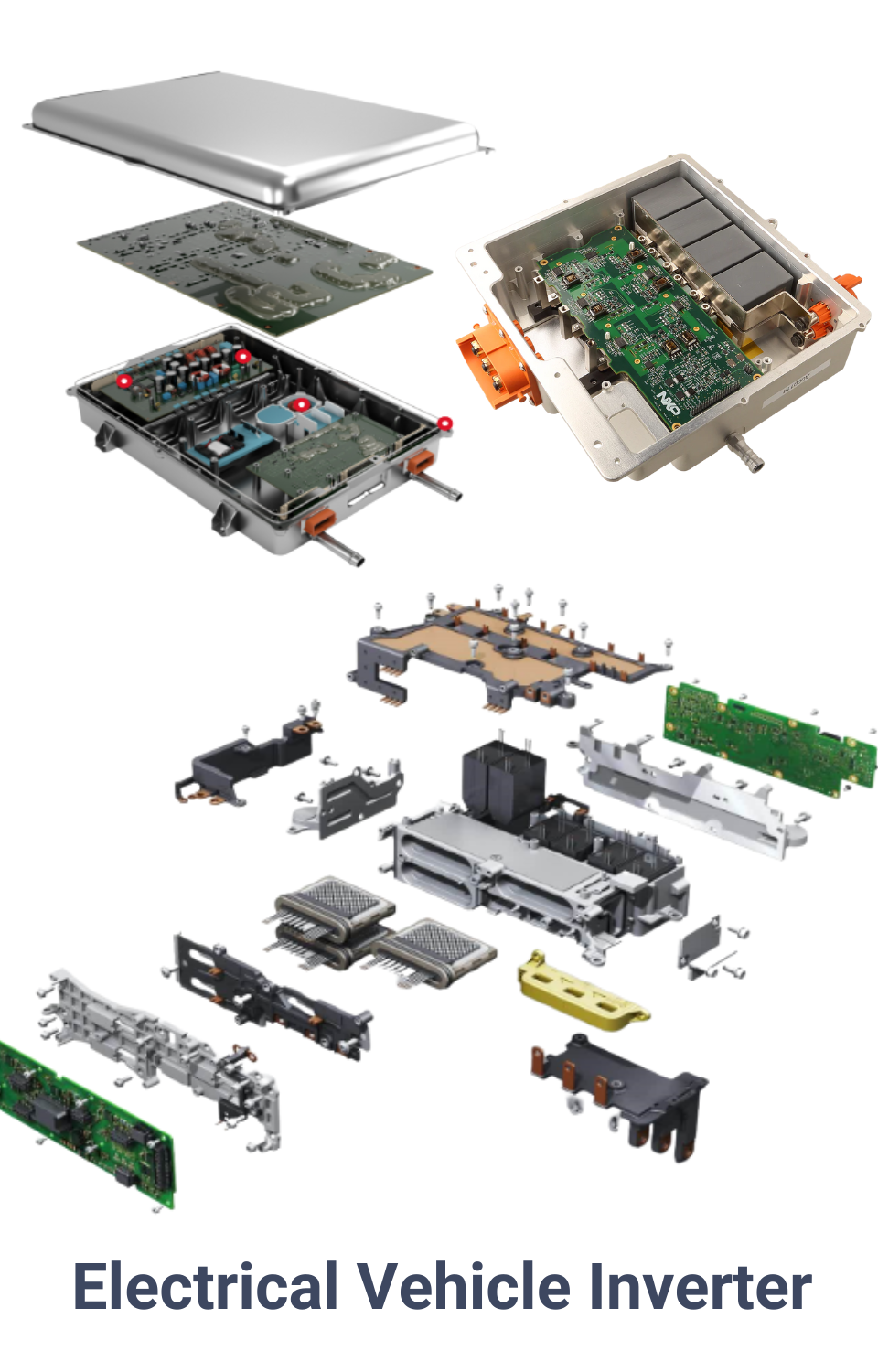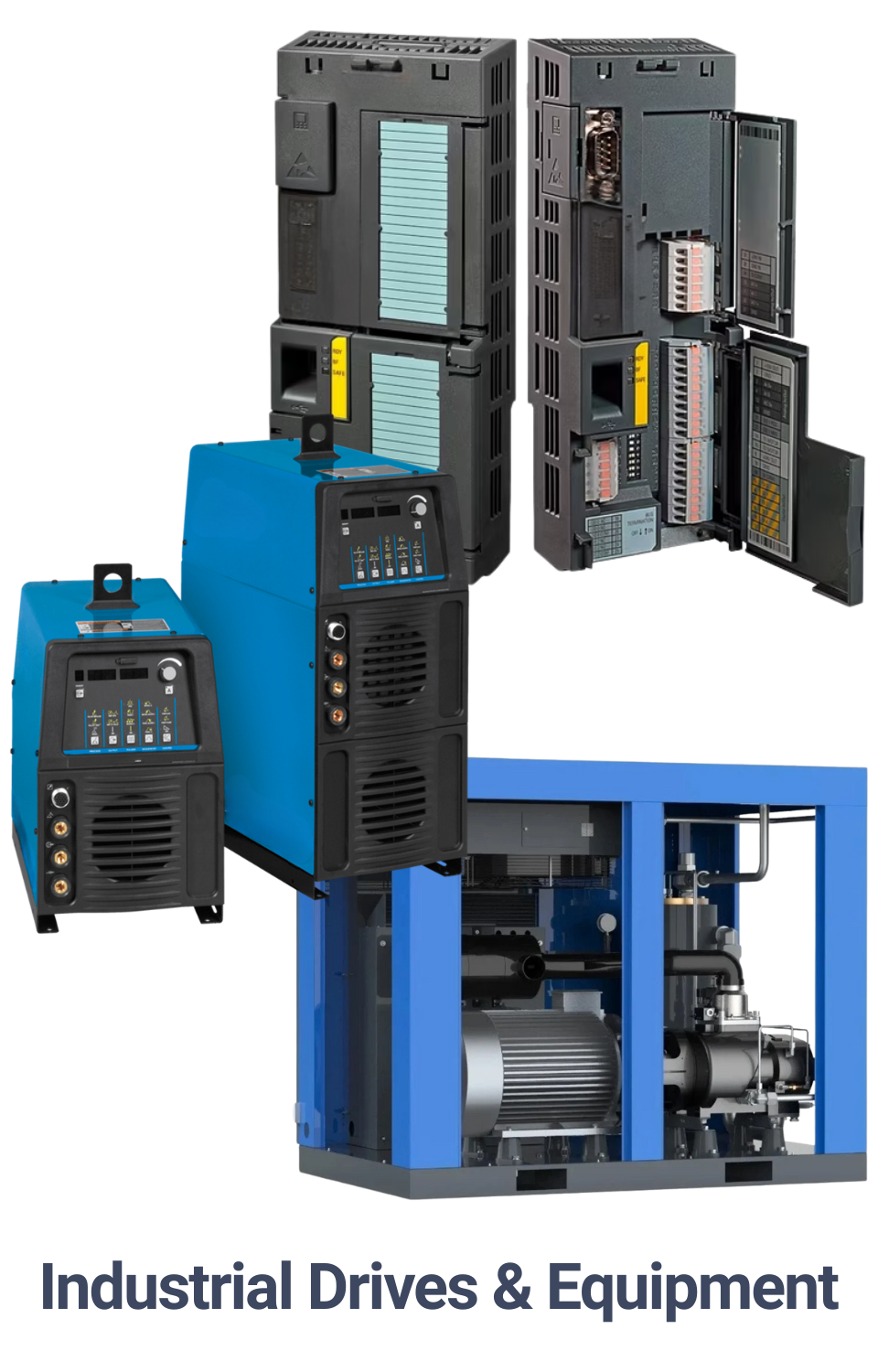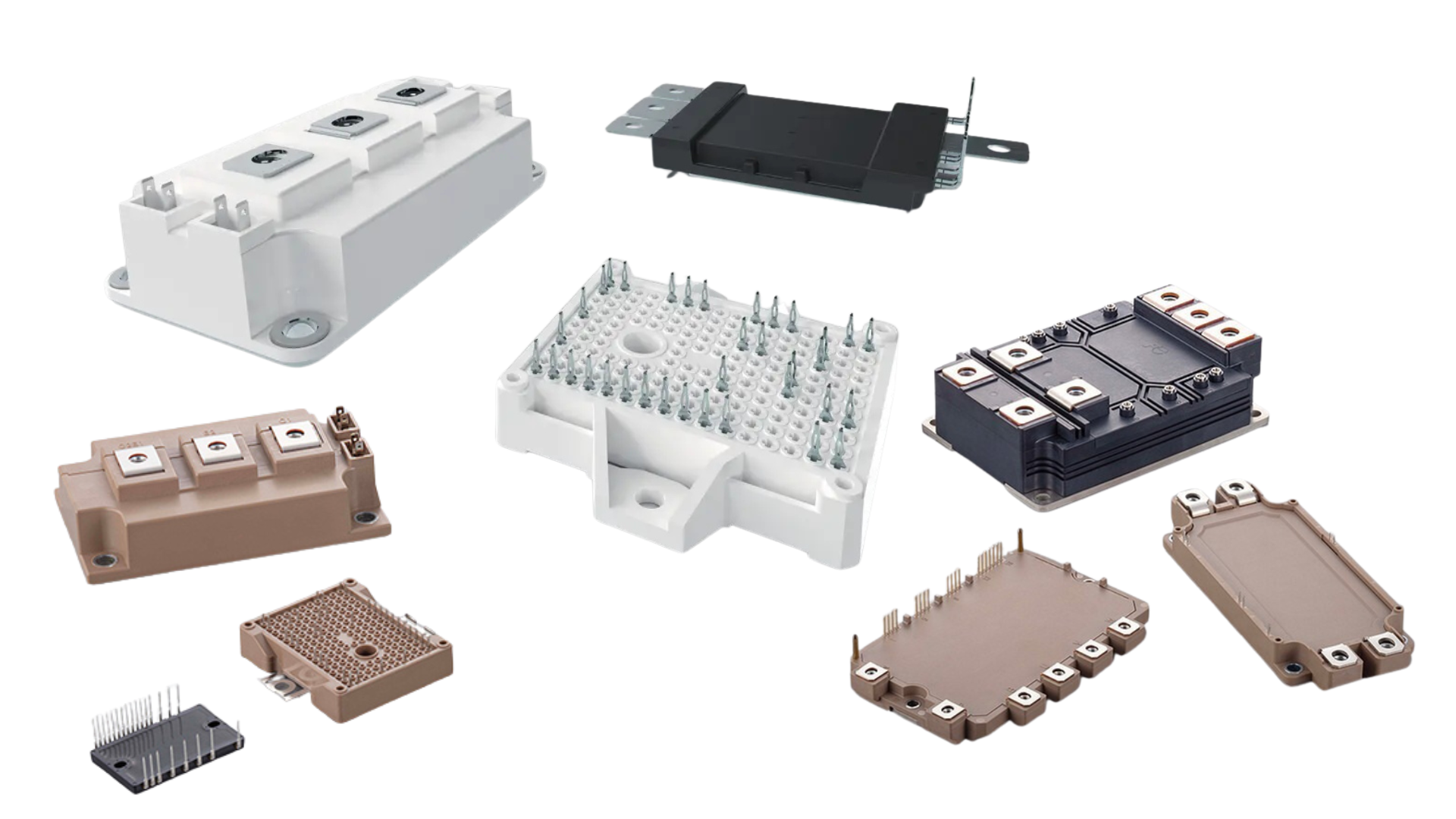Insulated-Gate Bipolar Transistor (IGBT)
Insulated-Gate Bipolar Transistor (IGBT) is a power semiconductor device that blends the strengths of two well-established technologies: the MOSFET, known for its fast switching speed, and the BJT, valued for its low conduction loss at high current. This hybrid design allows IGBTs to handle voltages ranging from 600 V to 6.5 kV while delivering both efficiency and controllability. In simple terms, you can think of an IGBT as the torque of a diesel engine (BJT efficiency) combined with the responsiveness of a sports car (MOSFET speed).
In systems like inverters, motor drives, renewable-energy converters, UPS, chargers, and welding equipment, an Insulated-Gate Bipolar Transistor (IGBT) is used to switch and control high voltage and high current efficiently in power electronics. Its purpose is to convert and regulate power. By combining MOSFET-style gate control with BJT-level conduction, an IGBT enables compact, efficient, and reliable high-power designs.
When comparing IGBTs and MOSFETs, the operating range becomes clear. IGBTs excel in high-voltage, medium-frequency applications, making them ideal for industrial and automotive power systems. MOSFETs, on the other hand, dominate lower-voltage, high-frequency applications, where switching speed is more critical than conduction efficiency. BJTs, though less common today, remain relevant in certain low-frequency, high-current applications.
The advantages of IGBTs are well recognized: they exhibit lower conduction losses than MOSFETs at high current, offer higher current density with simpler gate drive than BJTs, and provide a wide Safe Operating Area (SOA) with rugged performance. At the same time, they are not without limitations. Switching tail current (Eoff) can raise turn-off losses, and there is a risk of latch-up if the internal parasitic thyristor is unintentionally activated.
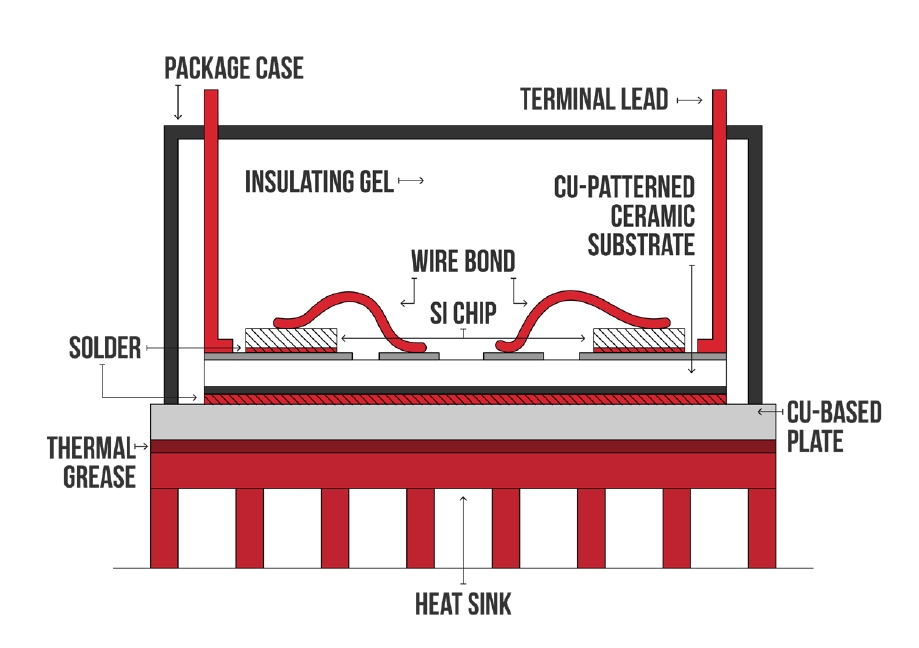 Source: chargedevs.com
Source: chargedevs.comPower Device Comparison
| Device | Key Strength | Limitation | Typical Use |
|---|---|---|---|
| MOSFET | High switching speed | Higher conduction loss | Low-to-medium power, high-frequency circuits |
| BJT | Low conduction loss | Slower switching | Low frequency, high current applications |
| IGBT | MOSFET speed + BJT efficiency | Not ideal for very high frequencies | Medium-to-high voltage: EVs, drives, renewable inverters |
Despite these drawbacks, IGBTs remain the workhorse of medium-to-high voltage power electronics. They are widely used in EV traction inverters, renewable energy converters, industrial motor drives, welding equipment, UPS systems, and high-power charging solutions. For applications requiring very high-frequency switching beyond 50–100 kHz, however, SiC MOSFETs and GaN HEMTs are the devices of choice.
See also: SiC & GaN Power Devices Page
Types of IGBT Packages
Insulated-Gate Bipolar Transistor (IGBT) in different systems is generally divided into two formats: discrete and module.
IGBT Discrete
Discrete IGBTs are single-device power switches used when designs need high voltage and current in a compact, replaceable package. They come in through-hole (heatsink-mounted) and SMT (reflow-soldered) formats covering ~600–1200 V. Typical targets include motor drives, welders, UPS/PFC stages, chargers, tools, and industrial power supplies.
- Through-hole (TO-247, TO-220, TO-3P)
Built for strong cooling via a bolt-down tab and thermal interface material (TIM). Preferred when continuous current, low thermal resistance, and easy field service matter. - SMT (TO-263/D²PAK, TO-252/DPAK, SOT-223/457)
Optimized for automated assembly and tight layouts, using PCB copper planes and vias for heat spreading. Ideal for space-constrained, high-volume products at low–mid power.
Most Common Type: TO-247 (600–1200 V)
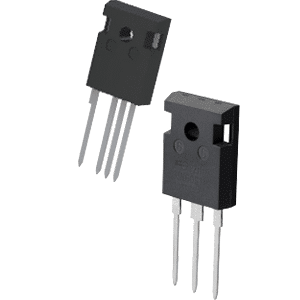
TO-247 IGBT offers a large die area, sturdy creepage/clearance, and a direct heatsink path for reliable thermal performance. It balances conduction loss and switching speed well for the 2–20 kHz range common in inverters and drives. It’s a go-to choice for industrial motor drives, EV chargers, welders, and UPS inverters.
PROs: High current capability, strong thermal path, easy service.
CONs: Bigger footprint/height, manual mounting, higher lead inductance than SMT.
USE CASES: Motor drives, welding power sources, UPS/PFC, chargers, industrial inverters.
IGBT Module
IGBT Power modules integrate multiple IGBT dies, freewheel diodes, and sensing into one block to deliver high power density and simplified assembly. Common styles include standard baseplate, baseplate-less, transfer-molded (TMPM), and double-sided cooling. Typical stacks use DBC ceramics (Al₂O₃, AlN, Si₃N₄) for isolation and heat spreading across half-bridge, six-pack (3-phase), chopper, and 3-level NPC/T-type topologies.
- Standard baseplate: DBC on a metal baseplate for flat mounting and strong heat spread—common in industrial drives, PV/wind inverters, and large UPS.
- Baseplate-less: No baseplate to cut thermal resistance and weight—ideal for compact, high-volume builds and automotive traction.
- Transfer-molded (TMPM): Overmolded die and interconnects for sealed, rugged, moisture-resistant modules—suited to harsh, high-vibration use.
- Double-sided cooling: Cooled from top and bottom to reduce thermal gradients—maximum power density and lifetime with more complex cooling.
Most Common Type: Standard baseplate six-pack (3-phase)
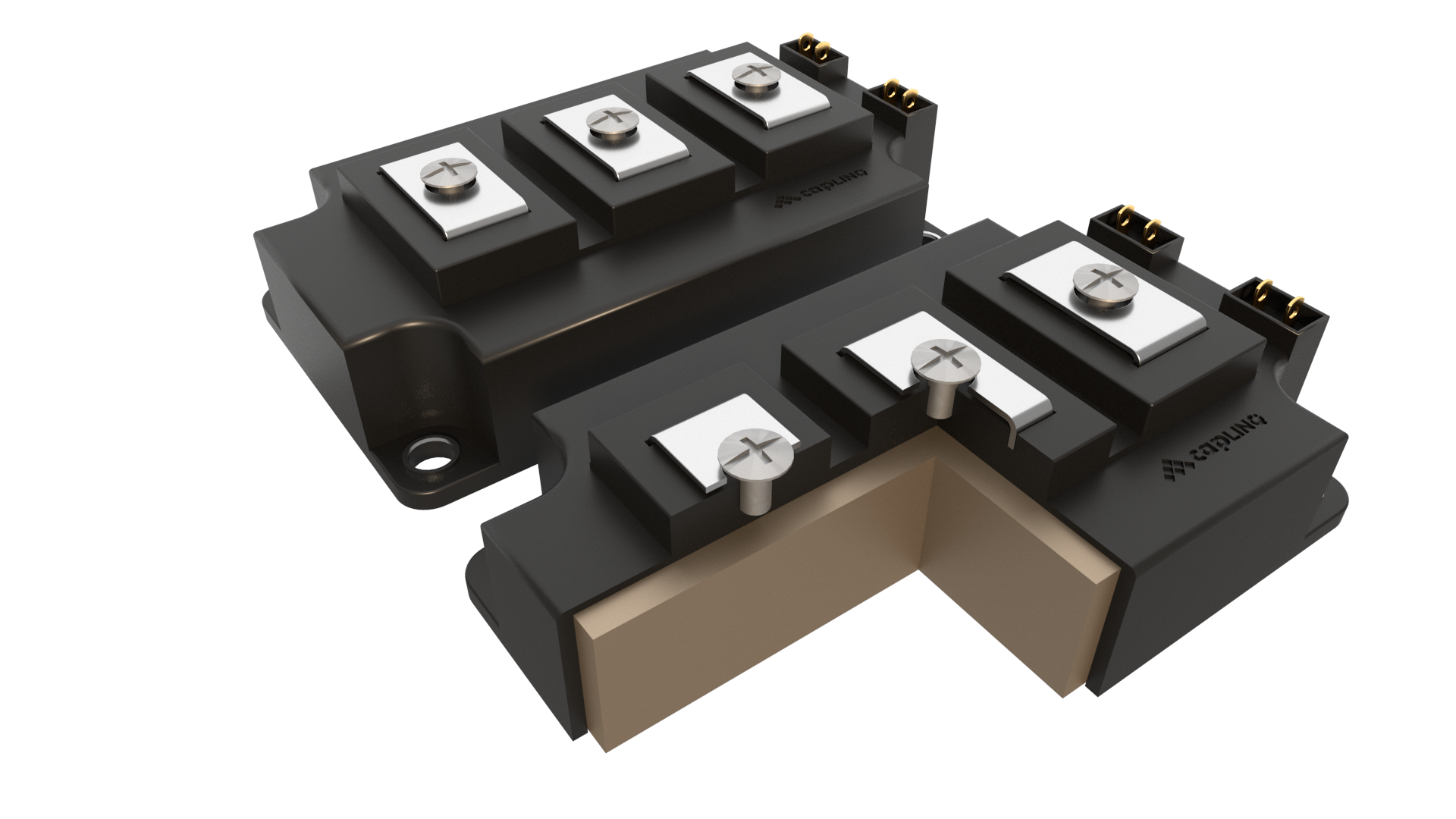
Six-pack baseplate module integrates three half-bridges in one package for compact 3-phase inverters. It offers proven mechanics, broad supplier availability, and straightforward heatsink or cold-plate mounting. It’s widely deployed in industrial drives, PV/wind inverters, elevators, compressors, and large UPS.
PROs: Robust mounting, good thermal spreading, easy system integration.
CONs: Higher mass/height, extra interface adds some thermal resistance.
USE CASES: 3-phase motor drives, renewable-energy inverters, large UPS/PFC systems, general-purpose high-power converters.
IGBT in Power Electronics
1) High efficiency at high power
- Low voltage drop when “on” → less energy wasted as heat.
- Result: smaller heatsinks, higher power density, better overall efficiency in big systems like EV inverters and factory drives.
2) Fast, clean switching (right where industry runs)
- Works best in the ~2–20 kHz switching range common to motor drives, traction inverters, UPS, and PFC stages.
- Voltage-controlled gate (easy to drive) and standard snubber/diode choices make switching predictable and repeatable.
3) Built for reliability and tough conditions
- Designed to survive short circuits, turn-off spikes, and inductive loads.
- Modern packaging and materials (robust substrates and die attach methods) help IGBT modules last through heat, vibration, and long duty cycles, meeting industrial and automotive standards.
![[IGBT Application Scope]](https://images.caplinq.com/applications/0199604ae0c277d68c4233277d9d1e0a-blobid0.png)
IGBT in Different Applications
IGBTs occupy the sweet spot for medium-to-high voltage and high current where efficiency under load, controllable switching, and cost matter more than extreme switching frequency. That’s why they dominate EV traction inverters, renewable-energy converters, industrial drives, welding systems, and large UPS/charger platforms. Where frequency rises significantly or partial-load efficiency is paramount at high bus voltages, SiC/GaN increasingly take the lead; otherwise, IGBTs remain the practical, power-dense, and reliable choice.
EV and HEV traction inverters (typically 400–800 V DC links, ~10–20 kHz) rely on IGBTs for low VCE(sat) at high torque and predictable switching at cruise/light load. Best-practice designs pair IGBTs with Kelvin emitter packages, laminated DC links (to suppress Lσ), tuned gate resistors for soft turn-off, and fast freewheel diodes (often SiC) to reduce Eon. With proper thermal paths (sintered Ag die attach, Si₃N₄ DBC, high-performance TIM), IGBT modules deliver high cycling endurance and low inverter losses across drive cycles.
In PV and wind converters, IGBTs form the backbone of DC/AC inverters and DC/DC stages, especially at 1.0–1.5 kV system voltages. Three-level topologies (NPC/T-type) let designers halve device stress and switching loss, pushing higher efficiency at moderate switching speeds. Wind turbine converters may use press-pack IGBTs for line-side robustness, while PV central and string inverters commonly adopt module IGBTs + SiC diodes for optimized Eon. IGBTs here balance efficiency, grid-code compliance, and lifecycle cost at utility scale.
Variable-frequency drives for pumps, compressors, conveyors, and robotics typically switch in the 2–8 kHz range where IGBTs offer excellent conduction efficiency, thermal robustness, and SOA. Their rugged short-circuit performance and predictable turn-off under inductive load make them the default in production environments. Welding power sources (with long output cables and punishing load steps) favor fast IGBT variants, tuned gate networks, and tailored snubbers to keep dv/dt and overshoot in check—delivering stable arcs, compact form factors, and long service life.
Double-conversion UPS systems (data centers, hospitals, industrial plants) use IGBT bridges for high-efficiency inversion and fast transfer with clean output waveforms under high crest-factor loads. Front-end PFC and fast DC chargers (depot/industrial) likewise rely on IGBTs for heavy RMS current handling and robust protection (desat + soft-off). Designs often mix IGBT power stages with SiC diodes to trim switching loss while preserving the IGBT’s favorable conduction profile at scale.
Other notable uses
- Rail traction & high-speed trains – IGBT traction inverters convert line DC/AC to multi-megawatt motor power with proven reliability and serviceability.
- Induction heating – IGBT arrays serve medium-frequency systems (tens of kHz) where power is high and MOSFET conduction loss would be excessive.
- SMPS & audio – At very high frequency, MOSFET/SiC typically win; IGBTs appear where bus voltage and current are high and switching frequency is moderate, e.g., specialized high-power SMPS or high-voltage Class-D stages.
Key Challenges IGBT Packaging
IGBT modules succeed when heat is moved out, parts stay mechanically sound, insulation stays clean, and the assembly survives tough, real-world use.
Thermal
Some power always turns into heat while the device carries current and each time it switches. Use high-thermal-conductivity bonding and encapsulation with a thin, even bond layer to move heat fast.
Electrical
Impurities and trapped air pockets can create weak spots that leak current or spark at high voltage. Select low-impurity, solvent-free materials that cure clean and bond tightly, and design for low-void assembly
Mechanical
Different materials expand and contract at different rates, which can crack joints or warp layers over time. Choose conductive die attach and encapsulants with the right stiffness, and set bond-layer thickness to balance heat flow and stress
Harsh Reliability
Automotive and aerospace duty cycles demand steady operation at high temperature (about 175–220 °C), plus resistance to moisture, vibration, and long service life. Use automotive-grade materials, high-temperature molding compounds, silicone gels, advanced ceramic substrates, and durable thermal interface materials, then confirm performance with long-duration heat and power-cycling tests.



